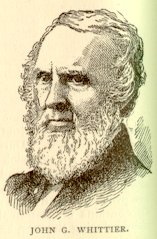Tunnels
Today, we'll look at tunnels from an odd angle. The University of Houston's College of Engineering presents this series about the machines that make our civilization run, and the people whose ingenuity created them.
So much of our technology seems to express basic human urges. We want to fly through the air, to communicate with each other, to travel about freely. And I remember, as a small boy, wanting to tunnel -- to hollow my own house out of a snowbank, to dig my own cave in the back yard, to explore the huge sandstone caves along the Mississippi.
And sure enough, we find that tunneling has drawn one great engineer after another into startling excesses of construction. The ancients were greater tunnelers than most of us realize -- and I don't mean just catacombs and crypts. In 525 BC the Greeks cut a six-foot-square water-supply tunnel, 2/3 of a mile long, on the island of Samos. The Romans connected two towns with the mile-long 30-foot-wide Posilipo road-tunnel in 36 BC.
But the great civil engineers of the 19th century were drawn into really grand tunneling. Two new kinds of transport created a need for tunnels. Railways had to lie on almost flat ground; and so did England's huge canal system, which had become its primary commercial trade route. Canals and railways, like the Roman aqueducts before them, spawned some heroic tunneling through obstacles.
Typical of these was Marc Brunel's rail tunnel under the Thames -- the first attempt to work in the really soft soil under a river. It was begun in 1825 and opened to foot traffic in 1843. During those 18 years Brunel invented the whole technology of soft-soil tunneling. He also suffered cave-ins, deaths, personal injury, and -- in the end -- he bankrupted his company. The tunnel wasn't opened to trains until 1865, 40 years after it was begun. But it's still in use today.
The star-crossed Hoosac tunnel through a mountain in Western Massachusetts was started as a canal tunnel in 1851 and completed as a rail tunnel in 1876. It was 26 feet square and 5 miles long; it consumed 199 lives; and it almost bankrupted Massachusetts. But the effort also provided all kinds of new tunneling technology, including the now common pneumatic drill.
Today those technologies are highly refined, and some remarkable tunneling goes on without much fanfare. Who's heard of the 85-mile-long Delaware aqueduct tunnel that carries water from the Catskills to New York City? It was finished in 1942.
 Tunnels have evoked some amazing engineering; but I was a child in cold Minnesota, and my favorite tunnel is the one in John Greenleaf Whittier's Snowbound. To get from the farmhouse to the barn, he says,
Tunnels have evoked some amazing engineering; but I was a child in cold Minnesota, and my favorite tunnel is the one in John Greenleaf Whittier's Snowbound. To get from the farmhouse to the barn, he says,
We cut the solid whiteness through
And where the drift was deepest, made
A tunnel walled and overlaid
With dazzling crystal: ...
I'm John Lienhard, at the University of Houston, where we're interested in the way inventive minds work.
(Theme music)
For more on tunneling, see the proceedings of the Smithsonian Institution's symposium on its tunneling exhibition, Down Under: Tunnels Past, Present, and Future, National Museum of American History, Saturday, October 23, 1993.
Bobrick, B., Labyrinths of Iron: Subways in History, Myth, Art, Technology, and War. New York: Henry Holt And Company, 1981/1986.
Whittier, J. G., Snow-Bound: A Winter Idyl, New York: The Limited Editions Club, MCMXXX, see especially, pp. 9-10.
I say more about tunnelling as a metaphor in Episodes 58, 664, 849 and 855. For more technical looks at tunnelling, go to the search function, using the word "tunnel."
This episode has been rewritten as Episode 1388.